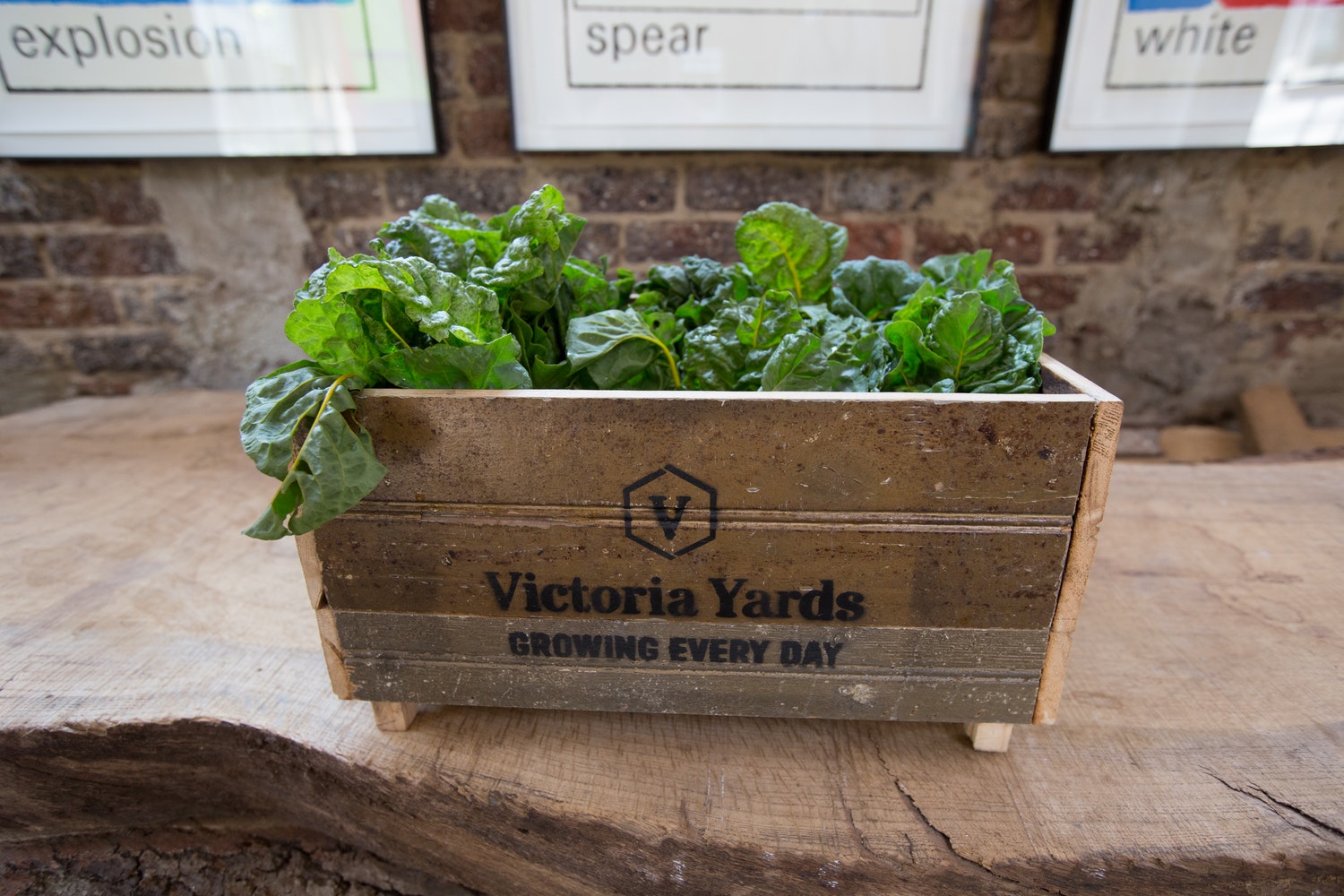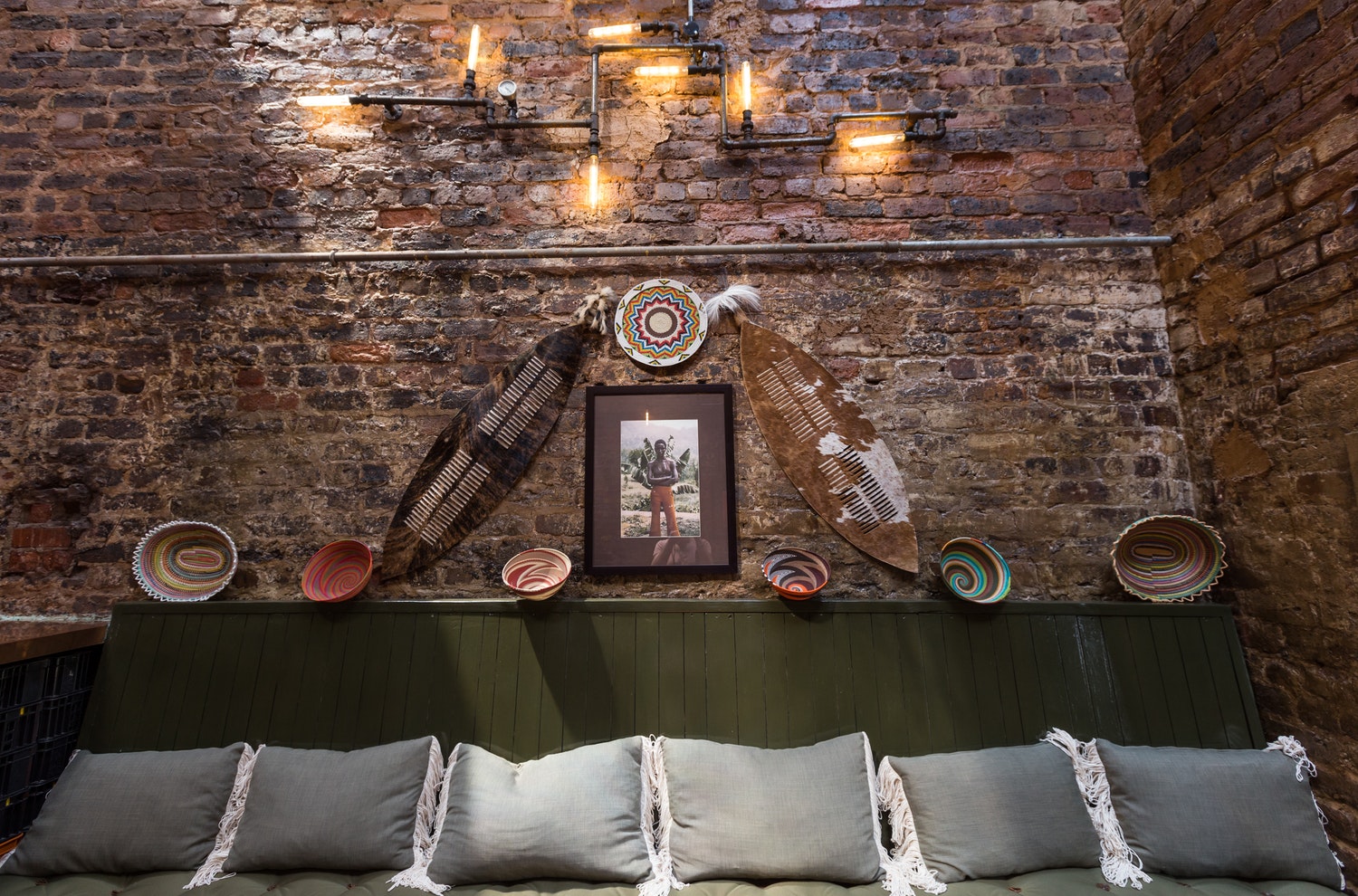Stories From Victoria Yards
Meet a vibrant community of artisans in Lorentzville
Victoria Yards grows a little bit greener every month.
The first time I visited this sprawling complex of century-old warehouses in Lorentzville, tucked between Troyeville and Bertrams, it was at the end of winter when Victoria Yards hosted the Joburg Fringe arts festival. The inner city arts community was already buzzing about Victoria Yards, but back then it was mostly a maze of gravel, crumbling concrete, and partially exposed brick.
The next time I went, just before Christmas, I discovered a wild green meadow growing in a courtyard between the warehouses and a few hardy creepers climbing up the various walls and trellises.
Last week, at the beginning of March, the transformation was more dramatic. Green groundcover sprouted up on either side of the concrete pathways. A basket of just-harvested produce – spinach, radishes, granadillas, courgettes – sat on a bench in an up-cycled wooden box reading: “Victoria Yards: Growing Every Day.”
Rather, it’s an overlapping series of shorter stories about people who have come together via divergent paths. Here are a handful of those stories.

Dudu
Duduzile Duru, or Dudu for short, is plucking dark purple beans from vines spread along the ground beside a warehouse, tossing the beans into a cardboard box. “Do you know what my name means?” she asks. I shake my head. “Comfort,” she says.
She’s all over the place at Victoria Yards, chatting to everyone and marching between the greenhouse and the guerilla-style gardens scattered all over the complex.
Dudu used to grow a small veggie garden at Bethany Home, a rehabilitation centre for abused women and children. She now does the bulk of the planting and harvesting at the urban farm – which doesn’t look like a farm at all, at least not yet – at Victoria Yards.
The soil here, once infertile, has been layered with mulch and sawdust and treated with natural fertilizer. The farm is just getting started. But Victoria Yards developer Brian Green hopes to start a weekly farmer’s market in the middle of the year.
I ask to take Dudu’s photo. “Right here,” she says, “next to the figs.” She beams at the camera beneath her conical Basotho hat.

Norris’ Workshop
Norris Kyenge Mwape’s carpentry workshop is buzzing. The room is filled with a jumble of half-finished wooden thrones, bound for a wedding party in the Joburg CBD. Geysers of orange sparks fly from a circular saw.
I don’t know what color these chairs will be. But the last batch of intricately carved chairs I saw in Norris’ workshop, when I visited a few months ago, were painted gold and upholstered with fuzzy leopard-print fabric.
I find Norris himself at the entrance, inspecting a chair with a bit of that leopard-print fabric wrapped jauntily around his neck. Norris, who is originally from the Democratic Republic of Congo, moved his workshop here from Bez Valley two years ago. He is one of a handful of tenants who were here before Brian and his associates broke ground for Victoria Yards in October 2016.
I walk around the workshop taking pictures of the half-dozen or so employees, careful to keep a safe distance from the extension cords and sparks. One worker, Francis, is particularly keen to be photographed and shows me the different steps involved in building the chairs.
I ask Norris for a photo but he steadfastly refuses. “Maybe next time,” he says. Back to work.

David Krynauw
David Krynauw has a different kind of carpentry workshop, with several dozen employees in a huge warehouse on the other side of the stream that divides Victoria Yards. David himself isn’t in today, but I chat with several members of his staff.
Krynauw produces high-end, avant-garde furniture and other arty pieces, including the tunnel-shaped wooden wedding chapel in progress today. Krynauw also makes a giant wooden wheel, twice the height of an adult human, called “the Jeppestown Play Bench”. Many of Krynauw’s designs are on display in the stunning Nando’s headquarters across the road from Victoria Yards.
The workers, wearing safety masks, scramble over pieces of the wedding chapel wielding noisy, handheld sanding machines. Varnishing and welding take place in separate areas.
I notice, with excitement and glee, that many of the artisans wielding the sanding machines are women.

Dario and Nina
Dario Manjate makes his art from the stacks and stacks of magazines piled against the far wall of his studio. I’ve seen lots of collage artists around Joburg lately, but none exactly like Dario.
The bits of paper in Dario’s collages are based on theme as well as color. A wall-sized portrayal of the Joburg skyline is made of smaller pictures of buildings cut from the magazines – buildings inside buildings. In a portrait of a woman’s face, the eye is made from cut-out cameras – mechanical eyes inside an eye. In a picture of a line of marching mineworkers, I look closely to see the miners’ bodies are rooms in a luxury hotel.
The last time I was here, I shot portraits of Dario with his collages and magazines. Dario isn’t in today but his wife Nina is, working on a stencil art project for her church on Plein Street in the CBD.
Nina tells me she and Dario moved to Joburg from Mozambique in 2003. “You speak English just like a South African,” I tell her. Nina blushes. “I’m still learning,” she says.


Impi Brewing Co.
My eyes widened the first time I walked into Impi Brewing Co., a tiny brewery with a clay pizza oven in an adjacent room. Owners Nico Booysen and Tsietsi Madonsela designed the restaurant with a modified Zulu warrior theme (“impi” means “war” in Zulu), featuring massive headdresses and shields on the walls and a bar made of colourful plastic beer crates.
“How did you enjoy it?” booms Nico, who walks past my friends and me sipping cold drinks at an outdoor table. (It’s working hours, so sadly no beer for me.) We tell him we’ve just ordered. “Well, you’re in for a surprise then,” Nico says.
I’m not surprised at all, as I’ve eaten here before. The pizza is just as delicious the second time around.
Between the ever-growing population at Victoria Yards and the hundreds of Nandos employees across the road, Impi has built up quite a clientele already. People file inside at a regular clip, exiting with stacks of takeaway pizzas. Impi will need a second oven soon.

Brian
Before this, Brian Green was best known for developing 44 Stanley Avenue in Milpark. 44 Stanley was the first Joburg industrial space to be converted into a mixed-use dining/retail/residential complex.
Brian is obviously thinking much bigger with Victoria Yards.
“When I walked down here for the first time, I looked at this place…I saw it was quite a buzzing little community, and it was this massive, old bunch of buildings that were decrepit and dilapidated…I just see such beauty in this stuff.”
In addition to the farm, the workshops, the art galleries and studios, Brian also envisions schools, concerts, and eventually residential space. Victoria Yards has also won a grant from the Johannesburg Development Agency – R40 million over three years – to clean up and develop the Jukskei River that flows through the property. The river currently runs through a cement waterway and looks more like a gray, polluted stream than a river. But plans are in place.
“We’ve got this beautiful thing starting to develop now into what has become Victoria Yards,” Brian says. “It’s only a year and a bit down the line, and it’s a happy place. People love it.”
When asked about the persistent comparisons between Victoria Yards and Maboneng – the huge, upscale property development project just a couple of kilometers away – Brian shares a few choice words. Anyone who visits both Maboneng and Victoria Yards can see there are many more differences than similarities.
But then Brian turns diplomatic.
Inside one of the undeveloped warehouses, slated to become an events venue, is an azure-blue wall. Brian tries to take a photo of every Victoria Yards visitor against that wall, to post on his Instagram account. He shoots one of me, and of my two friends.
I ask Brian if I can take a photo of him with the blue wall. His blue shirt matches perfectly.

Visiting Victoria Yards
Victoria Yards is open to the public every day, although some days are busier than others and new venues are opening all the time. Friday is a good day to catch artists in their studios. Impi Brewery is open for lunch every day.
On the first Sunday of each month, Victoria Yards holds open studios and other events as part of the “First Sundays in the Valley” campaign. Check the Victoria Yards Facebook page for details.

of 2Summers blog

